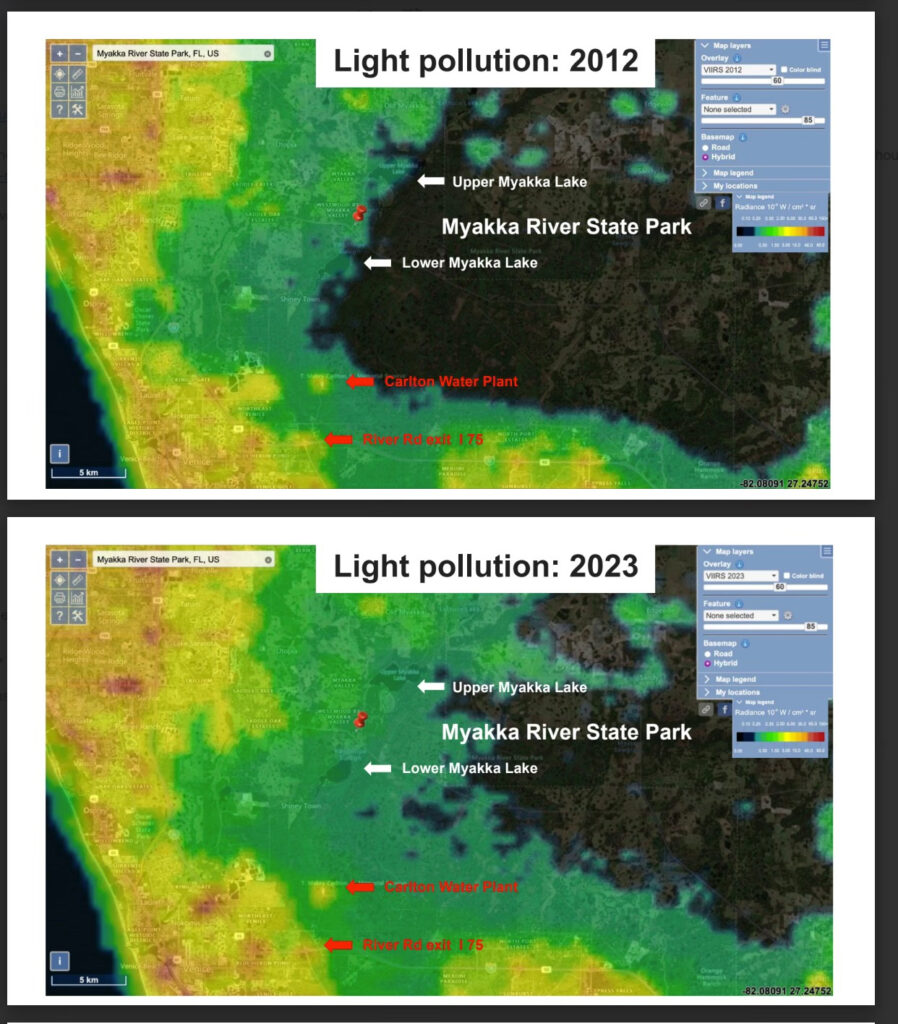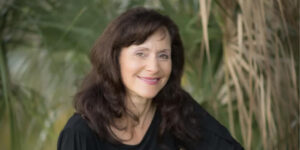Dark-sky advocate to WSLR’s ‘Our Changing Environment’: The problem is getting worse fast. But we know exactly how to fix it.
Host: When it comes to light pollution at Myakka State Park, there’s a “before picture” from 2012, and an “after picture” from 2023 generated with satellite imagery showing the area from space, and the difference is enormous. The dark spot from a decade ago has shrunk considerably, and that has all kinds of consequences, for wildlife—particularly birds—and humans. Julie Morris and Jono Miller, the hosts of the “Our Changing Environment” show on WSLR, interviewed environmental advocate Miri Hardy, to talk about how there can be too much light and what to do about it.

Map comparing light pollution at Myakka River State Park in 2012 and 2023.
Johannes Werner: The director of Friends of Myakka River began with the preamble that light pollution has gotten worse since the 2023 image.
Miri Hardy: A lot has happened in 2024, and I am awaiting the next set of data, which will hopefully be available by the middle of next month. Honestly, I fear what we’re going to see, but things have definitely gotten worse.
JW: Development is encroaching on the Myakka River, and the worst light polluters are the Veterans Cemetery and I-75 interchanges.
Miri Hardy is particularly concerned about development projects that increase density in the floodplain near the river.
MH: A lot of us have heard the term “wetland mitigation.” There’s that sense of, “Oh, we can make this go away. It’s really not an issue.” Again, as we found out this year, yes, it is an issue. We become extremely concerned when .. you have proposals to increase density in the Myakka floodplain. Right now, there’s an application in progress to put in a development of 100 houses immediately north of the park. We’re talking less than a quarter of a mile north of the park on a parcel that is hydrologically linked to the park. Again, this is very, very concerning, and we’re hopeful that there will be good response from the commissioners to understand that this is something we need to be looking at very, very carefully in the interest of our communities and in the interest of protecting our natural resources.

Miri Hardy, executive director of Friends of Myakka River.
JW: One state park in Florida—the Kissimmee Prairie near Orlando—has become a dark-sky reserve and has taken measures against light pollution. The park administrators did not take away people’s lights, but they do encourage neighbors to take measures.
A fix is actually quite easy.
MH: This is one of the exciting things about this particular problem. If you think about light pollution, light pollution is a form of habitat loss. By introducing light into the environment, we are excluding some species; we are changing other species’ behavior. Unlike the impact of a tractor that comes in and destroys a habitat, if you just change your lighting—if you make sure that your light is shielded, it is pointing downwards so that no light is pointing upwards, and if it’s not necessary, don’t have it.
JW: You can listen to the full interview by going to https://archive.wslr.org/ and looking for the latest edition of “Our Changing Environment.”
WSLR News aims to keep the local community informed with our 1/2 hour local news show, quarterly newspaper and social media feeds. The local news broadcast airs on Wednesdays and Fridays at 6pm.